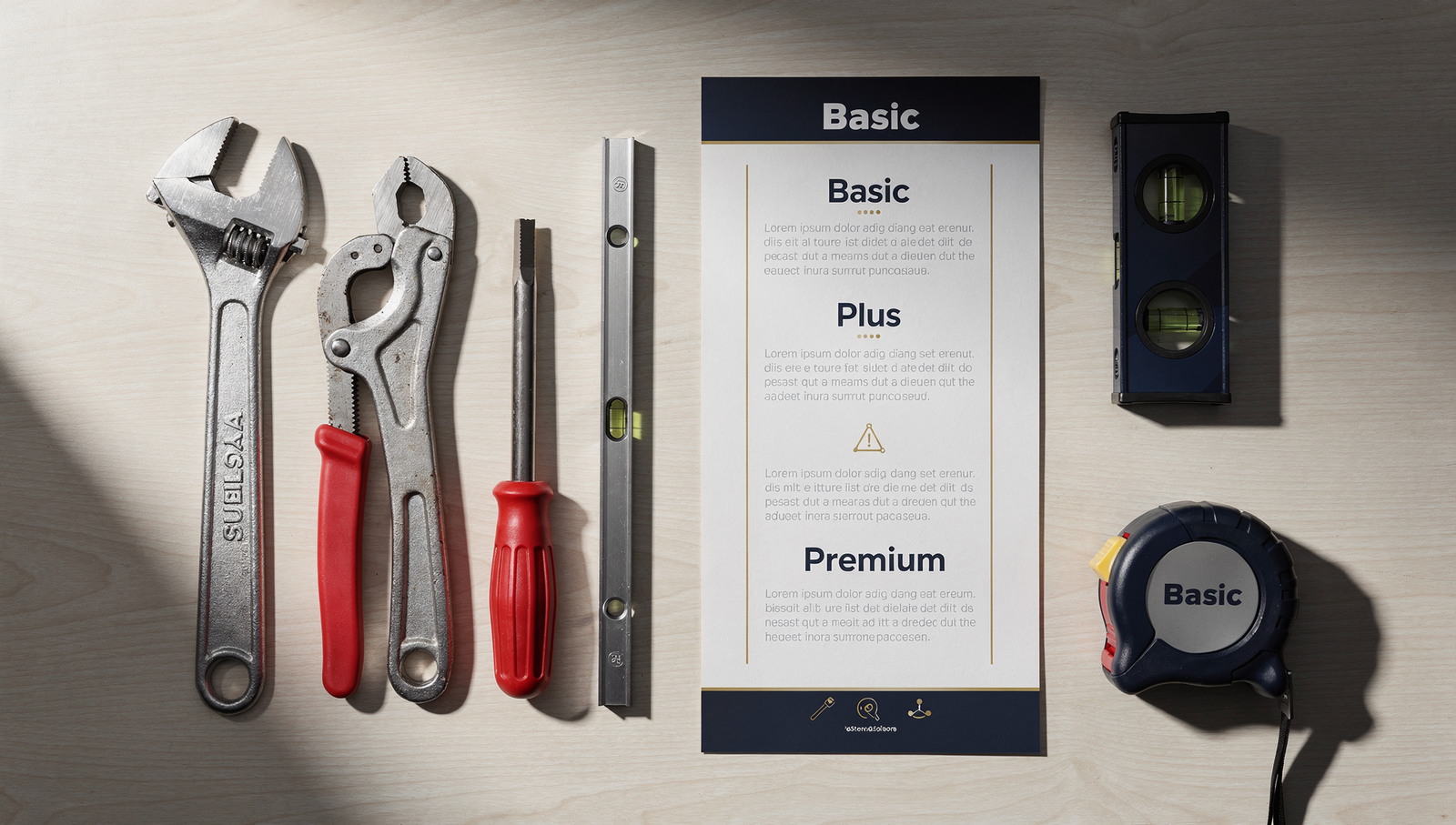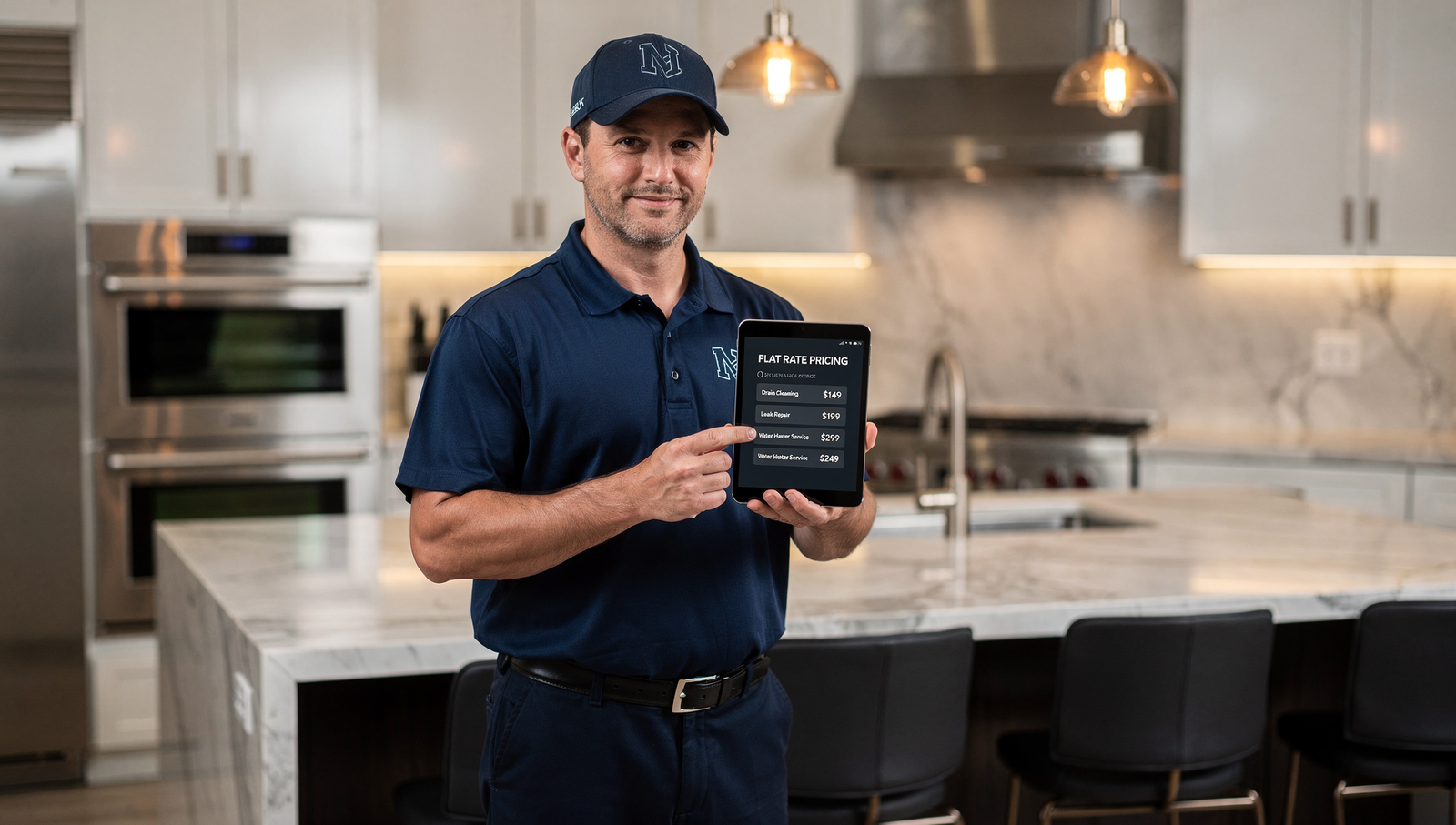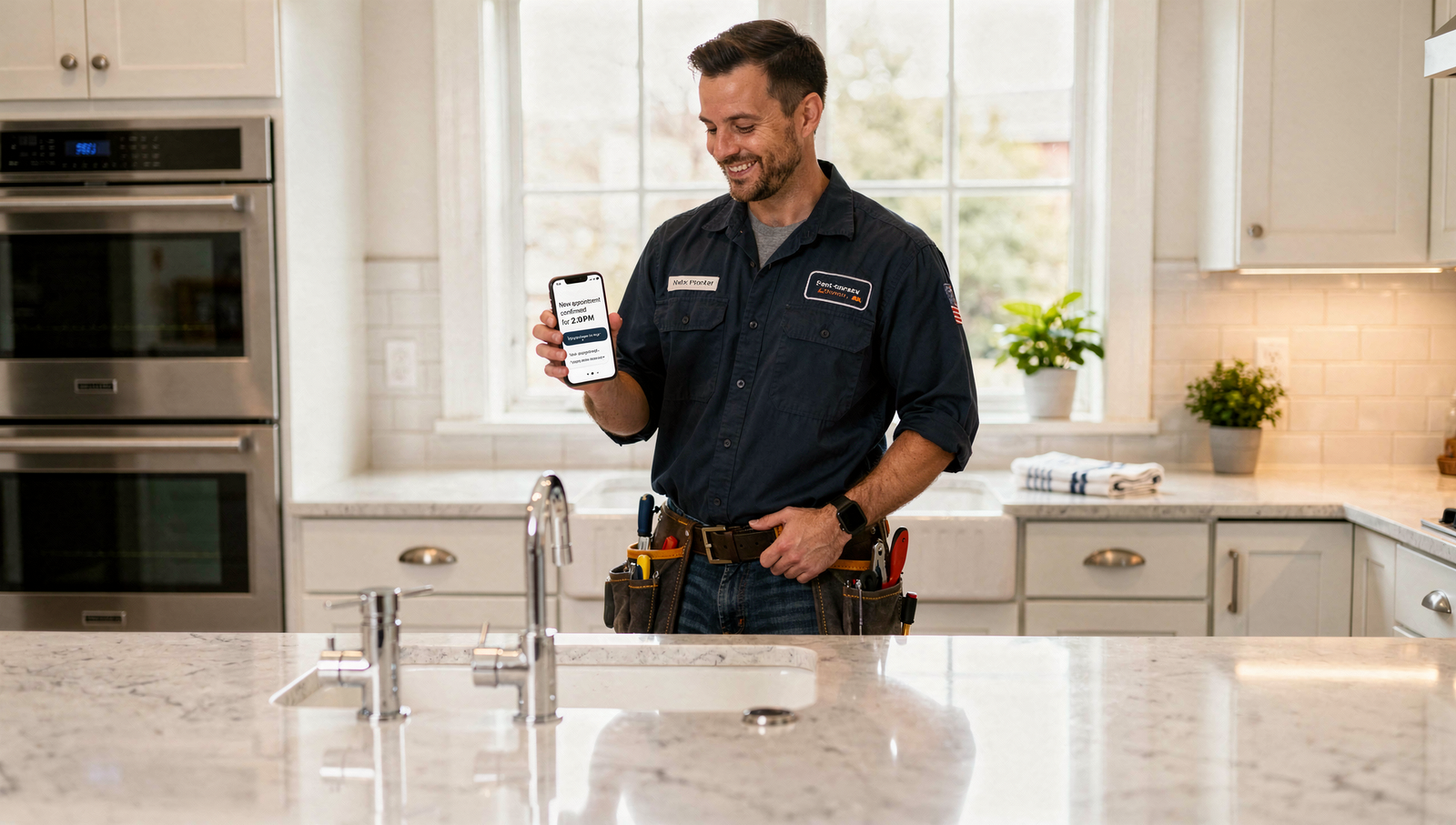9 Fonts for Real Estate Branding: Make Your Brand Unforgettable

Want More Clients Fast?
Steal This Website Rescue Kit to Get More Clients, More Calls, and More Sales on Autopilot
Your real estate brand is more than your logo or colors. The fonts you use shape how people feel about your business before they even pick up the phone or schedule a showing. Typography carries personality, authority, and trust. The right font can make the difference between appearing amateur and projecting the confidence clients crave.
If you’re wondering which are the top fonts for real estate branding, you’re in the right place. In this guide, you’ll discover exactly which typefaces to consider, why they work, and how to pair them effectively so your brand feels polished and memorable.
You’ll also find insights on how font choice plays into your broader website strategy. If you haven’t yet, check out Real Estate Website Conversion Tips for ideas on optimizing every element of your online presence.
Let’s dive in.
Why Fonts Matter So Much in Real Estate Branding
Think about the last time you browsed a real estate website or picked up a property flyer. Did you notice how the words looked before you read them? That first impression happens in milliseconds. Fonts influence trust, clarity, and emotion.
In real estate, fonts must accomplish three things:
Convey professionalism: Buying or selling a home is one of the largest decisions most people make. Your typography should reflect that level of seriousness.
Differentiate your brand: In crowded markets, you need a recognizable look that sets you apart.
Stay readable: Real estate materials often include property details, contact info, and calls to action. If your font is too fancy or cramped, you risk losing potential clients.
Selecting the top fonts for real estate branding requires balancing beauty with function. For additional ideas on creating a brand that feels cohesive and modern, read Best Color Schemes for Realtor Websites.
What Makes a Font Great for Real Estate?
Before you start downloading trendy typefaces, it helps to understand what makes a font effective in this industry. Here are four qualities to look for:
1. Readability at Different Sizes
Your brand appears everywhere…yard signs, postcards, websites, and social media. A strong real estate font stays clear whether it’s 10 feet wide on a billboard or scaled down to fit a phone screen.
2. A Balance of Modern and Timeless
You want to look contemporary, but not so trendy that your branding feels dated in a year. Fonts with clean lines and subtle character strike this balance beautifully.
3. A Professional Tone
Playful fonts can work for cafes or boutiques, but real estate benefits from a confident, refined feel. Your typography should inspire trust.
4. Compatibility with Your Brand Colors and Logo
Your fonts should complement the rest of your visual identity, not clash with it. Always test how your main typefaces look together in real-world contexts.
Top Serif Fonts for Real Estate Branding
Serif fonts have decorative strokes at the ends of each letter. They feel classic, established, and professional, making them popular with traditional real estate brands.
Below are some timeless serif options to consider:
1. Times New Roman
This is a familiar choice for a reason. It’s clear, conservative, and instantly recognizable. If you want a no-nonsense font that signals credibility, Times New Roman delivers.
Use Cases:
Contracts and legal documents
Property brochures
Agent bios
2. Georgia
Georgia is similar to Times New Roman but feels warmer and more contemporary. Its generous spacing makes it more readable on screens.
Use Cases:
Website body text
Email newsletters
Blogs
3. Garamond
Garamond is refined and elegant without being too ornate. If your brand focuses on luxury properties, Garamond can help you stand out.
Use Cases:
Luxury listings
High-end printed materials
Formal presentations
If you’re thinking about how these fonts can help improve your website’s engagement, don’t miss Real Estate Site Speed Optimization, which shows how typography and page performance work hand in hand.
Top Sans Serif Fonts for Real Estate Branding
Sans serif fonts don’t have the small strokes on the ends of letters. They look clean, modern, and approachable, making them ideal for real estate brands targeting younger buyers or promoting a more minimal style.
Here are some of the best sans serif options:
4. Helvetica
Helvetica is iconic. Its neutral, versatile style conveys clarity and simplicity. Many global brands use Helvetica to create a professional, timeless impression.
Use Cases:
Yard signs
Business cards
Website menus
5. Open Sans
Open Sans was designed for excellent legibility on screens. It feels friendly and modern while remaining professional. It also pairs well with more decorative fonts.
Use Cases:
Social media graphics
Blog headlines
Email templates
6. Montserrat
Montserrat is a geometric sans serif with a bit of personality. Its rounded letters help your brand feel fresh and contemporary.
Use Cases:
Digital marketing materials
Branded PDFs
Agent profile pages
Want more insights on how design choices impact your online leads? Have a look at Real Estate Landing Page Optimization.

Top Display Fonts for Real Estate Branding
Display fonts are meant for attention-grabbing headlines rather than body text. Used sparingly, they add distinct personality and make your branding more memorable.
Here are three popular display fonts to consider:
7. Playfair Display
Playfair Display combines classic elegance with a modern twist. It works beautifully for brands that want to project sophistication without feeling stuffy.
Use Cases:
Website hero sections
Luxury property banners
Custom presentations
8. Bebas Neue
Bebas Neue is an all-caps font that’s clean and impactful. It’s ideal when you need to make a strong first impression.
Use Cases:
Open house flyers
Headline graphics
Social media covers
9. Raleway
Raleway has an upscale feel with sleek, clean lines. It pairs beautifully with simple body fonts like Open Sans.
Use Cases:
Branded stationery
Listing presentations
Signage
Pairing Fonts for a Cohesive Brand
Selecting one good font is just the beginning. Successful real estate brands rely on combinations of fonts that work together. Here are smart pairing strategies:
1. Serif + Sans Serif
A classic combination: a serif font for headings (like Garamond) and a sans serif for body text (like Open Sans).
2. Weight Variations
Many fonts come in multiple weights. Mixing light, regular, and bold weights within the same typeface creates hierarchy and visual interest.
3. Display + Neutral
Use a distinctive display font for headlines and pair it with a neutral font for legibility.
If you want your typography to convert, take a look at How to Rank Higher on Google Maps to understand how branding impacts local search visibility.
Common Font Mistakes to Avoid
Even the best fonts can work against you if used poorly. Here are common pitfalls:
Using too many fonts: Stick to two or three. More than that feels cluttered.
Ignoring sizing hierarchy: Make sure your titles, subheadings, and body text are clearly distinguished.
Using illegible scripts: Avoid fancy scripts for key information.
Skipping licensing: Always verify that you have the right to use your fonts commercially.
Real-World Examples of Real Estate Typography
To see these fonts in action, let’s look at real brands:
Compass: Clean, modern sans serif fonts create a sleek, approachable identity.
Sotheby’s International Realty: Combines an elegant serif with minimalist layouts, signaling luxury.
Redfin: Leverages a custom sans serif for a contemporary, tech-savvy look.
How to Choose Fonts for Your Real Estate Brand
Here’s a step-by-step guide:
1. Define your brand personality
Are you traditional or modern? Luxury or approachable?
2. Collect inspiration
Screenshot websites and marketing you admire.
3. Test in real materials
Make mockups of postcards, websites, and social media graphics.
4. Gather feedback
Show designs to colleagues and clients.
5. Finalize and document
Document your font choices in your brand guide.
Free vs. Paid Fonts
Free fonts, like Google Fonts, are accessible and versatile. Paid fonts can set your brand apart but often require licensing fees. If you’re on a budget, options like Montserrat and Open Sans look polished without extra cost.
Tips for Using Fonts Effectively
Prioritize clarity: Avoid sacrificing readability.
Keep contrast strong: Light fonts need more weight on dark backgrounds.
Be consistent: Reuse your fonts across all materials.
Scale carefully: Check that fonts look good in large and small sizes.
Conclusion: Build a Brand That Inspires Trust
The top fonts for real estate branding are more than aesthetic choices. They’re tools to build trust, drive recognition, and convert prospects into clients. Whether you prefer timeless serif styles or clean sans serif fonts, choosing the right typography is essential.
If you’d like help building a brand and website that inspires confidence and generates more leads, I’d love to connect. Book your free strategy call today and let’s make your real estate brand unforgettable.
Matt Pieczarka
Want a Free Website Audit?
Fill out your information below and we will send you a personal screen share video of tips on how to make your actual website better!
7 Storytelling Plays That Turn Plumbing Websites Into Lead Machines
7 Storytelling Plays That Turn Plumbing Websites Into Lead Machines Facebook X LinkedIn Threads Email The tricks learned in this video and blog post have gotten one of our clients
9 Plumbing Company Branding Strategies That Get More Calls
9 Plumbing Company Branding Strategies That Get More Calls Facebook X LinkedIn Threads Email The tricks learned in this video and blog post will help you get your brand to as many
7 Plumbing Membership Plans Benefits That Boost Profit
7 Plumbing Membership Plans Benefits That Boost Profit Facebook X LinkedIn Threads Email The tricks learned in this blog post have increased recurring revenue for one of our plumbi
7 Plumbing Services Pricing Tiers That Sell Like Crazy
7 Plumbing Services Pricing Tiers That Sell Like Crazy Facebook X LinkedIn Threads Email The tricks learned in this video and blog post have gotten one of our clients an average of
7 Plumbing Service Pricing Strategies To Boost Profit
7 Plumbing Service Pricing Strategies To Boost Profit Facebook X LinkedIn Threads Email The tricks learned in this video and blog post have gotten one of our clients an average of
7 Plumbing Maintenance Agreement Strategies That Drive Revenue
7 Plumbing Maintenance Agreement Strategies That Drive Revenue Facebook X LinkedIn Threads Email Most plumbers leave recurring revenue on the table. These maintenance agreement str
AI Tools for Plumbing Businesses That Book Jobs 24/7
AI Tools for Plumbing Businesses That Book Jobs 24/7 Facebook X LinkedIn Threads Email The AI tricks learned in this blog post have gotten one of our plumber clients an average of
Hiring Plumbers And Onboarding Program For Rockstar Crew Growth
Hiring Plumbers And Onboarding Program For Rockstar Crew Growth Facebook X LinkedIn Threads Email The strategies in this blog post helped one of our plumbing clients cut onboarding
7 SMART Goals For Plumbing Growth In 90 Days
7 SMART Goals For Plumbing Growth In 90 Days Facebook X LinkedIn Threads Email The strategies in this blog post helped one of our clients get organized and grow his plumbing busine
Some More Posts About Strategy and Growth…
- Marketing Plan For Small Business 2026 Every Owner Should Copy
- Benefits of Professional Website for Small Business: The Hidden Profits
- How to Get More Referrals for Small Local Business Fast
- Customer Retention Strategies Small Business Owners Never Hear About
- How Small Businesses Compete Online And Actually Win In 2026
- Blogging for Small Business Growth: 2026 Profit Multiplier
- Sales Funnel For Small Business Website That Prints Money
- What Is A Listicle And Why Your Website Desperately Needs One
- Strategic Website Design That Turns Small Business Clicks Into Clients
- The Simple Blueprint to Explosive Small Business Growth









